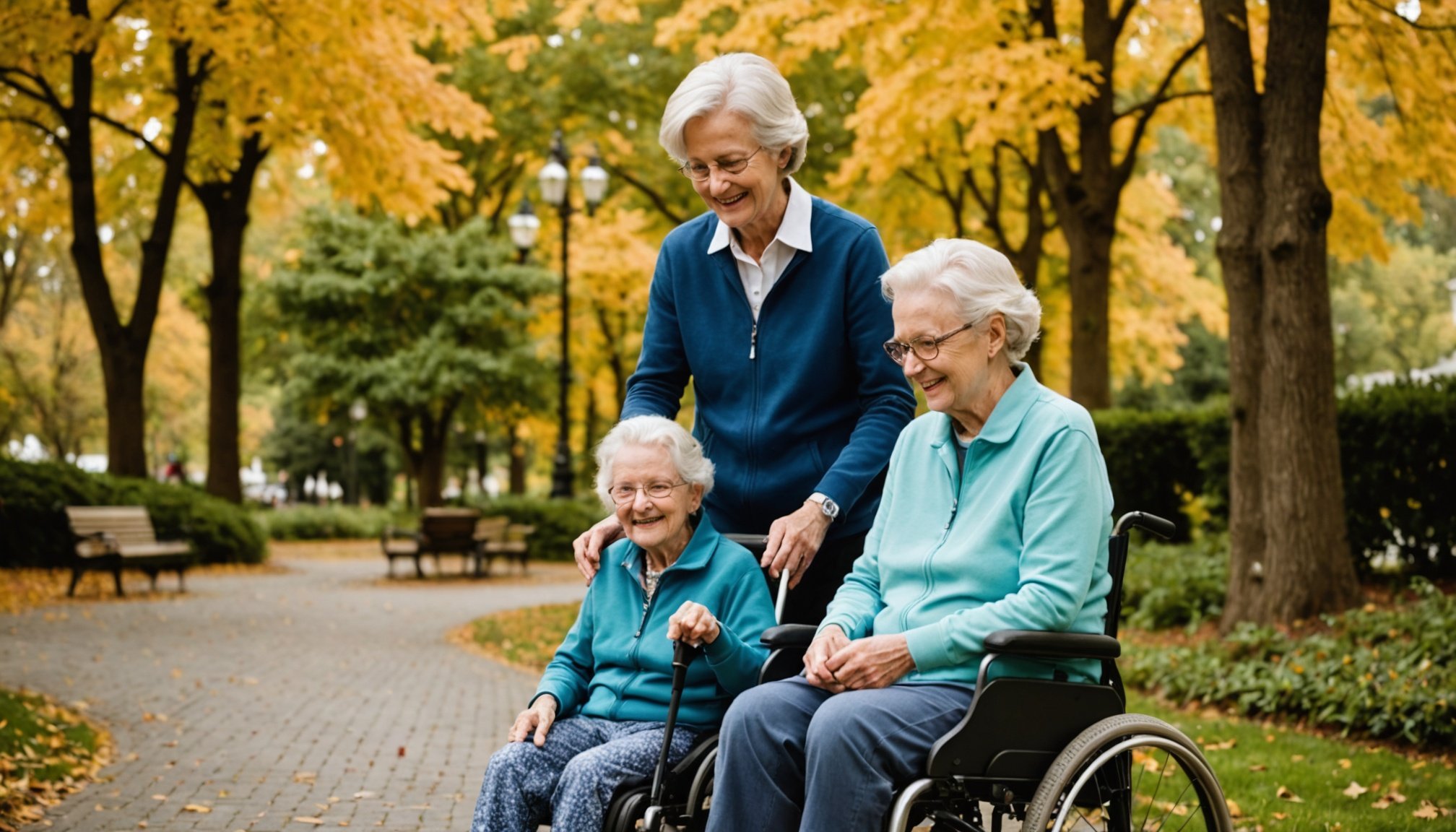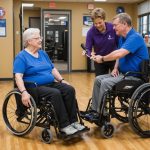Understanding Adaptive Clothing for Seniors
Adaptive clothing is uniquely designed to address the specific needs of seniors, offering functionality that’s essential for their mobility and health challenges. The purpose of adaptive clothing goes beyond mere aesthetics; it is crafted to accommodate conditions such as arthritis and limited range of motion. These garments are instrumental in providing comfort and convenience, making dressing easier for seniors. Traditional clothing may present difficulties in dressing that adaptive garments are designed to overcome.
Mobility issues and health concerns are key considerations in the development of these clothing items. Seniors often require attire that supports their physical limitations, such as seated positions for those using wheelchairs, or flexible materials for those with sensitive skin. Features like Velcro closures and side openings ensure independence and dignity in dressing. The senior demographic demands clothing choices that not only cater to their diminishing physical capabilities but also maintain their sense of style and individuality.
In parallel : Top Strategies for Seniors: Mastering Chronic Pain Management
Demographic factors, including age, health conditions, and lifestyle, significantly influence the choice of adaptive clothing. By understanding these factors, caregivers and seniors alike can make informed decisions that enhance daily living activities. Employing adaptive clothing in their wardrobe is not just a choice, but a necessity for enhancing life quality.
Key Features to Enhance Comfort
When discussing comfort features in adaptive clothing, the emphasis is on soft, breathable fabrics that cater to the unique needs of seniors. Soft fabrics, such as cotton or bamboo, offer a gentle touch against the skin, reducing irritation and ensuring comfort for those with sensitive skin. Breathable materials allow air circulation, helping to regulate body temperature, which is crucial for maintaining comfort throughout the day.
Also to discover : Top Strategies for Seniors to Stay Vibrantly Active This Winter
Adjustable clothing is another critical aspect of comfort features. Garments with adjustable fits, such as elastic waistbands or adjustable straps, provide a personalised fit, allowing seniors to adjust their clothing according to their comfort and body changes. These adjustments ensure that clothing remains comfortable without being restrictive.
Additionally, it’s important to consider sensory sensitivities when selecting fabrics. Many seniors experience heightened sensitivity; choosing fabrics that minimize discomfort can significantly enhance their overall wearing experience. Certain designs incorporate tags and seams to be less intrusive, ensuring nothing distracts from the comfort level provided by the clothing.
In summary, soft, breathable fabrics and adjustable designs are essential in enhancing the comfort of adaptive clothing, addressing the specific needs of seniors while supporting their dignity and independence.
Ease of Dressing and Undressing
Adaptive clothing lays an essential role in fostering independence for seniors by making dressing and undressing easier. This is achieved through the use of simple closures such as Velcro and magnetic fasteners, which replace buttons and zippers. These alternatives offer simplicity and reduce the effort required, especially for individuals with dexterity challenges.
Designs are created to encourage ease of use, allowing seniors to dress without the need for extensive dressing assistance. This fosters a sense of personal accomplishment and diminishes reliance on caregivers. For the instances where assistance is needed, adaptive clothing still makes the process far more efficient and less cumbersome.
Additionally, adaptive designs often feature wide openings and strategically placed seams that accommodate a variety of physical needs. Combining comfort with practicality, the clothing supports seniors’ independence while never compromising the dignity they can retain in their dressing routines.
Understanding the ease and practicality these features bring can transform the daily task of dressing into a more manageable activity, empowering seniors to approach dressing with confidence and without stress.
Accessibility and Functionality
Adaptive clothing excels in providing accessibility and functional design for seniors with mobility challenges. For those who use wheelchairs or have limited mobility, garment features such as side openings and adaptable lengths are crucial. These elements ensure ease of access and dressing comfort, reducing strain on the body.
Functional design doesn’t stop with easy access. Practical additions like integrated pockets are vital, offering convenience for carrying personal items without hassle. These pockets and other elements are thoughtfully placed, avoiding interference with mobility aids like wheelchairs.
In selecting adaptive clothing, consider outfits suited for various environments, whether at home or during outings. Different settings demand varied levels of formality and functionality; thus, having versatile clothing options can help seniors feel comfortable and self-assured in any scenario. Balancing style with necessary functionality allows seniors to lead active, fulfilling lives.
Adaptive clothing thus ensures that the daily act of dressing aligns with the unique needs of seniors, making each day smoother and more dignified, irrespective of the environment or physical limitations. The focus remains on providing individuals with choices that maintain their independence and enhance their quality of life.
Style and Personal Preference
Navigating the world of adaptive clothing involves more than practicality; style plays a pivotal role. For seniors, maintaining a sense of personal style can significantly boost confidence and self-esteem. It’s about more than just functionality—it’s about feeling good and expressing individuality through clothing choices.
Personalization is a key feature in adaptive clothing. Options like colour choices, patterns, and custom tailoring allow seniors to select items that not only meet their functional needs but also align with their personal preferences. This level of customization ensures that seniors can continue to enjoy fashion as a form of self-expression.
Notably, various brands offer stylish adaptive clothing designed specifically for seniors. These brands focus on combining fashion with functionality, ensuring that each piece meets mobility requirements while remaining trendy and aesthetically pleasing. From elegant blouses to tailored trousers, adaptive clothing options are available that respect and reflect the personal taste of the wearer.
Exploring adaptive fashion choices empowers seniors to curate a wardrobe that honours their individual style, fostering a sense of dignity and boosting self-assurance every time they dress. By prioritizing style alongside accessibility, adaptive clothing surpasses mere utility, offering real sartorial satisfaction.
Practical Buying Tips and Recommendations
Navigating the world of adaptive clothing can be straightforward with the right approach. When purchasing, it’s crucial to focus on precise measurements. Adaptive clothing often features unique designs that require accurate size selection to ensure comfort and functionality. Measure not just the general clothing size, but specific dimensions like sleeve lengths or waist adjustments that are critical for senior needs.
Reputable brands play a pivotal role in quality assurance. Leading names in this market offer a range of adaptive garments tailored to various mobility and health requirements. Among these, some stand out for their innovative designs and high consumer satisfaction. Research and identify top brands that are noted for their durability and reliability based on industry expertise and customer feedback.
Consumer reviews are another invaluable tool in the purchasing process. They provide firsthand accounts regarding wearability, ease of use, and overall satisfaction. Look for reviews that discuss the material quality, comfort, and any adaptive features that are effective in daily use.
Reading a blend of expert and user reviews ensures a well-rounded understanding, making it easier to make an informed decision while considering personal style and specific needs.
Clothing Comparisons and Reviews
Exploring adaptive clothing requires understanding product comparisons and detailed reviews to make informed choices. When comparing clothing, essential factors such as durability, price, and comfort come into play. For example, fabrics durable enough for frequent washing provide long-term value, while a higher price might reflect enhanced materials or innovative designs.
Reviews provide insights into real-user experiences, helping identify which products deliver on comfort and functionality. Feedback often highlights whether clothing meets senior needs, including the ease of dressing or specific adjustments like Velcro closures. Knowing if an item lived up to its promises in terms of accessibility can guide potential buyers in their decisions.
Moreover, well-structured comparisons showcase strengths and weaknesses, offering a clearer picture of the adaptive clothing landscape. Through user feedback, both the practical and the aesthetic elements become apparent—providing a foundation for decision-making. In this realm, every comment or review aims to paint a full picture of an item’s accessibility and how it fits into active senior lifestyles.











